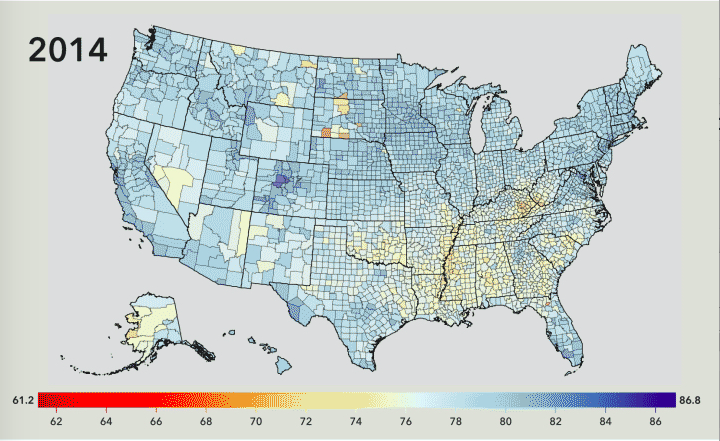
Study reveals big gaps in U.S. life expectancy based on location
Babies born today in 13 U.S. counties have a lower life expectancy than their parents did when they were born decades ago, a new study said.
The gap between counties with the highest and lowest life expectancies is larger now than it was back in 1980, according to the study by the Institute for Health Metrics and Evaluation (IHME) at the University of Washington in Seattle and published in AMA Internal Medicine.
Risk factors such obesity, lack of exercise, smoking, hypertension, and diabetes – explained 74 percent of the variation in longevity. Socioeconomic factors, a combination of poverty, income, education, unemployment, and race, were independently related to 60 percent of the inequality, and access to and quality of health care explained 27 percent
“Looking at life expectancy on a national level masks the massive differences that exist at the local level, especially in a country as diverse as the United States,” said lead author Laura Dwyer-Lindgren, a researcher at IHME.
Oglala Lakota County, South Dakota – which includes the Pine Ridge Native American reservation – had the lowest life expectancy in the country in 2014 at 66.8 years, comparable to countries like Sudan (67.2), India (66.9), and Iraq (67.7), the study found.
Clusters of counties with low life expectancies were also identified in Kentucky, West Virginia, Alabama, and several states along the Mississippi River. Several counties in these states and others saw decreases in life expectancy since 1980, while much of the country experienced increases.
“These findings demonstrate an urgent imperative, that policy changes at all levels are gravely needed to reduce inequality in the health of Americans,” said Dr. Ali Mokdad, an author on the study. “Federal, state, and local health departments need to invest in programs that work and engage their communities in disease prevention and health promotion.”

—
By: David Beasley Earth.com Staff Writer














